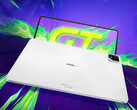Verdict – Xiaomi Redmi K Pad
The Xiaomi Redmi K Pad is a well-built, compact and above all impressively equipped tablet that features a modern design and a competitive price. Fans of compact tablets who are not willing to import can only hope that Xiaomi brings a global version to Europe. In the mini-format segment, it does not get much better than this. In many respects, the Xiaomi Redmi K Pad even outperforms the iPad Mini (2024).
Its combination of a powerful and efficient chipset, minimal throttling and a large battery results in excellent runtimes and strong system performance. Those disappointed by the lack of an OLED panel need not worry. The Xiaomi Redmi K Pad's LCD is very good and operates without PWM flicker.
It is unfortunate that Xiaomi has opted not to offer a version with a 5G modem, as the device's compact form factor could make it a viable smartphone replacement for some users. A fingerprint sensor is also missing in daily use, and as with many affordable mid-range tablets, buyers will need to accept some uncertainty regarding long-term software update support.
Pros
Cons
Price and availability
Whether the Xiaomi Redmi K Pad will be launched in Europe remains unclear. So far, Xiaomi has only announced the tablet for the Chinese market. The entry-level version has a suggested retail price of approximately 320 euro (around $350 USD). At our loan provider Trading Shenzhen, prices currently start at about 330 euro (approximately $360 USD).
Table of Contents
- Verdict – Xiaomi Redmi K Pad
- Specifications of the Xiaomi Redmi K Pad
- Chassis – compact Android tablet
- Features – Xiaomi Pad with fast USB
- Software – Xiaomi Redmi K Pad with Android 15
- Communication and GNSS – Xiaomi tablet without 5G
- Cameras – Xiaomi Redmi K Pad with single cam
- Accessories and warranty – Xiaomi tablet with power adapter
- Input devices and operation – Android tablet supports stylus
- Display – Xiaomi Redmi K Pad without OLED
- Performance – Xiaomi pad with high-end chip
- Emissions – moderate heat buildup during gaming
- Battery life – compact tablet with fast charging
- Notebookcheck overall rating
- How possible alternatives compare
The Xiaomi Redmi K Pad is compact and lightweight, yet the 8.8-inch tablet boasts impressive specifications. With the MediaTek Dimensity 9400+ and up to 16 GB of RAM, Xiaomi's tablet offers strong performance, making it a serious alternative to the iPad Mini.
Specifications of the Xiaomi Redmi K Pad
Chassis – compact Android tablet
The build quality of the Xiaomi Redmi K Pad is at a high level. Its combination of a metal unibody and glass front leaves a premium impression, and the matte rear panel is relatively resistant to fingerprints.
Also impressive is the screen-to-body ratio of over 83 percent, which is remarkable for a small tablet. For comparison, the iPad Mini (2024) only reaches around 77 percent, giving the Xiaomi Redmi K Pad a more modern appearance and a genuinely compact form factor.
Weighing just 326 grams, the 8.8-inch tablet sits comfortably in the hand. It remains easy to hold even during extended use, making it noticeably more comfortable in everyday use compared to larger tablets. One drawback, however, is the lack of any IP certification.
Features – Xiaomi Pad with fast USB
The Redmi K Pad is a well-equipped tablet, standing out in particular thanks to its two USB-C ports. The USB-C port on the bottom edge supports USB 3.2 with data transfer rates of up to 5 Gbps and also allows for video output via DisplayPort. The second USB-C port on the left side of the chassis is specified as USB 2.0. This combination enables users to exchange data via USB-OTG or listen to music through headphones while simultaneously charging the device or using a gaming controller.
For wireless connections, Wi-Fi Direct and Miracast are supported, allowing users to stream content, for example, to a TV. However, there is no SD card slot and no traditional 3.5 mm headphone jack.
Software – Xiaomi Redmi K Pad with Android 15
The Xiaomi Redmi K Pad ships with the second-generation HyperOS, which comes preloaded with Google frameworks out of the box. This allows users to manually install and use the Play Store with ease.
In addition to Chinese and English, no German language pack is available. Some system areas may still display Chinese characters regardless of the selected language, which requires occasional workarounds.
As for software updates, Xiaomi does not provide clear commitments for the Chinese market. At the time of testing, the mid-range tablet was running security patches from June 2025.
Sustainability
The Xiaomi Redmi K Pad is delivered in plastic-free packaging. The manufacturer does not provide any information on recycled materials or reparability.
Communication and GNSS – Xiaomi tablet without 5G
The compact Xiaomi tablet supports the fast Wi-Fi 7 standard, although it lacks support for the 6 GHz band. In our test using a Wi-Fi 6E router, we achieved high and relatively stable transfer speeds. Paired with the Asus ROG Rapture GT-AXE11000, speeds of over 1,700 Mbit/s were possible.
The Xiaomi Redmi K Pad lacks a cellular modem for mobile internet access. There is also no version with support for satellite-based location services.
| Networking | |
| Xiaomi Redmi K Pad | |
| iperf3 transmit AXE11000 | |
| iperf3 receive AXE11000 | |
| Apple iPad Mini 7 (2024) | |
| iperf3 transmit AXE11000 | |
| iperf3 receive AXE11000 | |
| iperf3 transmit AXE11000 6GHz | |
| iperf3 receive AXE11000 6GHz | |
| Lenovo Legion Tab TB321FU | |
| iperf3 transmit AXE11000 6GHz | |
| iperf3 receive AXE11000 6GHz | |
| Xiaomi Pad 7 | |
| iperf3 transmit AXE11000 | |
| iperf3 receive AXE11000 | |
| iperf3 transmit AXE11000 6GHz | |
| iperf3 receive AXE11000 6GHz | |
| Average 802.11 a/b/g/n/ac/ax/be | |
| iperf3 transmit AXE11000 | |
| iperf3 receive AXE11000 | |
| iperf3 transmit AXE11000 6GHz | |
| iperf3 receive AXE11000 6GHz | |
| Average of class Tablet | |
| iperf3 transmit AXE11000 | |
| iperf3 receive AXE11000 | |
| iperf3 transmit AXE11000 6GHz | |
| iperf3 receive AXE11000 6GHz | |
Cameras – Xiaomi Redmi K Pad with single cam
Xiaomi relies on Omnivision sensors for the Xiaomi Redmi K Pad. On the front, there is an 8 MP wide-angle camera capable of recording 1080p video at up to 30 frames per second. The main rear-facing camera uses a 13 MP sensor with an f/2.28 aperture and supports HDR as well as 4K recording at 30 fps.
Photos taken in daylight show decent sharpness and colour reproduction, although the Xiaomi Redmi K Pad tends to render blue tones somewhat oversaturated. Still, the camera hardware is well suited for scanning documents or taking notes digitally.
Image comparison
Choose a scene and navigate within the first image. One click changes the position on touchscreens. One click on the zoomed-in image opens the original in a new window. The first image shows the scaled photograph of the test device.
HauptkameraHauptkameraLow Light

Accessories and warranty – Xiaomi tablet with power adapter
The box includes a USB cable and a 67-watt power adapter. Trading Shenzhen also provides an EU plug adapter for local sockets, though this is not part of the official standard package. For its compact tablet, Xiaomi offers a wide range of accessories for customers in China, including gamepads and protective cases, although most of these are not listed in common import shops.
Warranty: 12 months. For our review unit purchased via Trading Shenzhen, warranty claims can be handled through a return address in Germany.
Input devices and operation – Android tablet supports stylus
A standout feature of the Xiaomi Redmi K Pad is its vibration motor. Xiaomi states that two dual X-axis motors are used, delivering surprisingly good haptic feedback for a tablet.
Thanks to the high refresh rate of up to 165 Hz, visuals appear extremely smooth even at 3K resolution, and inputs are processed without delay at a sampling rate of up to 1,080 Hz. The tablet can be operated using a finger, the Xiaomi Focus Pen, or the Redmi Stylus.
Unfortunately, this mid-range tablet lacks a fingerprint sensor. Unlocking is only possible via 2D facial recognition using the front-facing camera.
Display – Xiaomi Redmi K Pad without OLED
The 8.8-inch 12-bit display achieved a very good peak brightness of 779 cd/m² in our APL18 test.
Xiaomi equips its compact tablet with a high resolution of 3,008 × 1,880 pixels and triple TÜV Rheinland certification, a German standard for display safety and visual comfort. The LCD panel is free from PWM flicker and supports several HDR formats, including Dolby Vision and HDR Vivid.
| |||||||||||||||||||||||||
Brightness Distribution: 94 %
Center on Battery: 743 cd/m²
Contrast: 1486:1 (Black: 0.5 cd/m²)
ΔE ColorChecker Calman: 1.61 | ∀{0.5-29.43 Ø4.78}
ΔE Greyscale Calman: 2.9 | ∀{0.09-98 Ø5}
99.8% sRGB (Calman 2D)
Gamma: 2.232
CCT: 6864 K
| Xiaomi Redmi K Pad LCD, 3008x1880, 8.8" | Apple iPad Mini 7 (2024) IPS, 2266x1488, 8.3" | Lenovo Legion Tab TB321FU LTPS, 2560x1600, 8.8" | Xiaomi Pad 7 LCD, 3200x2136, 11.2" | |
|---|---|---|---|---|
| Screen | -13% | 0% | -11% | |
| Brightness middle (cd/m²) | 743 | 525 -29% | 441 -41% | 838 13% |
| Brightness (cd/m²) | 721 | 512 -29% | 420 -42% | 815 13% |
| Brightness Distribution (%) | 94 | 91 -3% | 91 -3% | 96 2% |
| Black Level * (cd/m²) | 0.5 | 0.43 14% | 0.5 -0% | 0.88 -76% |
| Contrast (:1) | 1486 | 1221 -18% | 882 -41% | 952 -36% |
| Colorchecker dE 2000 * | 1.61 | 2 -24% | 1.08 33% | 1.8 -12% |
| Colorchecker dE 2000 max. * | 3.82 | 4.3 -13% | 2.52 34% | 3.9 -2% |
| Greyscale dE 2000 * | 2.9 | 3 -3% | 1.1 62% | 2.5 14% |
| Gamma | 2.232 99% | 2.2 100% | 2.19 100% | 2.25 98% |
| CCT | 6864 95% | 7109 91% | 6655 98% | 6912 94% |
* ... smaller is better
Screen Flickering / PWM (Pulse-Width Modulation)
| Screen flickering / PWM not detected | |||
In comparison: 53 % of all tested devices do not use PWM to dim the display. If PWM was detected, an average of 8111 (minimum: 5 - maximum: 343500) Hz was measured. | |||
The colour calibration in the sRGB colour space of the Xiaomi Redmi K Pad is well executed, with no visible deviation from reference colours. The black level of 0.5 cd/m² is slightly elevated on the Xiaomi tablet, but thanks to the high brightness, we still achieve a solid contrast ratio of around 1,500:1.
The measured response times do not reach OLED levels but should be more than sufficient for most casual gamers.
Display Response Times
| ↔ Response Time Black to White | ||
|---|---|---|
| 16.5 ms ... rise ↗ and fall ↘ combined | ↗ 8.5 ms rise | |
| ↘ 8 ms fall | ||
| The screen shows good response rates in our tests, but may be too slow for competitive gamers. In comparison, all tested devices range from 0.1 (minimum) to 240 (maximum) ms. » 37 % of all devices are better. This means that the measured response time is better than the average of all tested devices (20.2 ms). | ||
| ↔ Response Time 50% Grey to 80% Grey | ||
| 29.6 ms ... rise ↗ and fall ↘ combined | ↗ 15.5 ms rise | |
| ↘ 14.1 ms fall | ||
| The screen shows relatively slow response rates in our tests and may be too slow for gamers. In comparison, all tested devices range from 0.165 (minimum) to 636 (maximum) ms. » 38 % of all devices are better. This means that the measured response time is similar to the average of all tested devices (31.6 ms). | ||
Performance – Xiaomi pad with high-end chip
The built-in Dimensity 9400+ is an exceptionally powerful chipset for the price class of the Xiaomi Redmi K Pad, giving this mid-range tablet a highly responsive feel and excellent benchmark results. In the Geekbench multi-core test, it even outperforms the iPad mini with the Apple A17 Pro. The scores from the AI benchmarks also show very strong results.
| PCMark for Android - Work 3.0 | |
| Lenovo Legion Tab TB321FU | |
| Xiaomi Redmi K Pad | |
| Average Mediatek Dimensity 9400+ (16985 - 18344, n=4) | |
| Xiaomi Pad 7 | |
| Average of class Tablet (4622 - 27428, n=78, last 2 years) | |
| CrossMark - Overall | |
| Lenovo Legion Tab TB321FU | |
| Xiaomi Pad 7 | |
| Average of class Tablet (227 - 2155, n=55, last 2 years) | |
| Xiaomi Redmi K Pad | |
| UL Procyon AI Inference for Android - Overall Score NNAPI | |
| Average Mediatek Dimensity 9400+ (72895 - 76852, n=4) | |
| Xiaomi Redmi K Pad | |
| Average of class Tablet (2597 - 76852, n=63, last 2 years) | |
| Lenovo Legion Tab TB321FU | |
| Xiaomi Pad 7 | |
| AImark - Score v3.x | |
| Average Mediatek Dimensity 9400+ (49562 - 50153, n=2) | |
| Xiaomi Redmi K Pad | |
| Average of class Tablet (138 - 55794, n=53, last 2 years) | |
| Lenovo Legion Tab TB321FU | |
| Xiaomi Pad 7 | |
| AI Benchmark - Score V6 | |
| Average Mediatek Dimensity 9400+ (1945 - 12713, n=5) | |
| Average of class Tablet (70.4 - 17293, n=28, last 2 years) | |
| Xiaomi Pad 7 | |
| Xiaomi Redmi K Pad | |
This picture continues in the GPU tests. The Immortalis-G925 MP12 in the Xiaomi Redmi K Pad clearly outperforms even the iPad mini. In the demanding Tier tests of GFXBench, it practically leaves the Apple competition in the dust.
In our gaming tests, 120 FPS is easily achievable, and demanding titles like Genshin Impact run consistently at the highest graphics settings on the 3K display.
GFXBench (DX / GLBenchmark) 2.7: T-Rex Onscreen | 1920x1080 T-Rex Offscreen
GFXBench 3.0: on screen Manhattan Onscreen OGL | 1920x1080 1080p Manhattan Offscreen
GFXBench 3.1: on screen Manhattan ES 3.1 Onscreen | 1920x1080 Manhattan ES 3.1 Offscreen
GFXBench: on screen Car Chase Onscreen | 1920x1080 Car Chase Offscreen | on screen Aztec Ruins High Tier Onscreen | 2560x1440 Aztec Ruins High Tier Offscreen | on screen Aztec Ruins Normal Tier Onscreen | 1920x1080 Aztec Ruins Normal Tier Offscreen | 3840x2160 4K Aztec Ruins High Tier Offscreen
| 3DMark / Wild Life Extreme Unlimited | |
| Xiaomi Redmi K Pad | |
| Lenovo Legion Tab TB321FU | |
| Apple iPad Mini 7 (2024) | |
| Xiaomi Pad 7 | |
| 3DMark / Wild Life Extreme | |
| Xiaomi Redmi K Pad | |
| Lenovo Legion Tab TB321FU | |
| Apple iPad Mini 7 (2024) | |
| Xiaomi Pad 7 | |
| 3DMark / Wild Life Unlimited Score | |
| Xiaomi Redmi K Pad | |
| Lenovo Legion Tab TB321FU | |
| Apple iPad Mini 7 (2024) | |
| Xiaomi Pad 7 | |
| 3DMark / Solar Bay Score | |
| Xiaomi Redmi K Pad | |
| Lenovo Legion Tab TB321FU | |
| Apple iPad Mini 7 (2024) | |
| Xiaomi Pad 7 | |
| 3DMark / Solar Bay Unlimited Score | |
| Xiaomi Redmi K Pad | |
| Lenovo Legion Tab TB321FU | |
| Apple iPad Mini 7 (2024) | |
| 3DMark / Steel Nomad Light Unlimited Score | |
| Xiaomi Redmi K Pad | |
| Lenovo Legion Tab TB321FU | |
| Apple iPad Mini 7 (2024) | |
| Xiaomi Pad 7 | |
| 3DMark / Steel Nomad Light Score | |
| Xiaomi Redmi K Pad | |
| Lenovo Legion Tab TB321FU | |
| Apple iPad Mini 7 (2024) | |
| Xiaomi Pad 7 | |
| GFXBench (DX / GLBenchmark) 2.7 / T-Rex Onscreen | |
| Lenovo Legion Tab TB321FU | |
| Xiaomi Pad 7 | |
| Xiaomi Redmi K Pad | |
| Apple iPad Mini 7 (2024) | |
| GFXBench (DX / GLBenchmark) 2.7 / T-Rex Offscreen | |
| Xiaomi Redmi K Pad | |
| Lenovo Legion Tab TB321FU | |
| Xiaomi Pad 7 | |
| Apple iPad Mini 7 (2024) | |
| GFXBench 3.0 / Manhattan Onscreen OGL | |
| Lenovo Legion Tab TB321FU | |
| Xiaomi Redmi K Pad | |
| Xiaomi Pad 7 | |
| Apple iPad Mini 7 (2024) | |
| GFXBench 3.0 / 1080p Manhattan Offscreen | |
| Xiaomi Redmi K Pad | |
| Lenovo Legion Tab TB321FU | |
| Xiaomi Pad 7 | |
| Apple iPad Mini 7 (2024) | |
| GFXBench 3.1 / Manhattan ES 3.1 Onscreen | |
| Lenovo Legion Tab TB321FU | |
| Xiaomi Redmi K Pad | |
| Xiaomi Pad 7 | |
| Apple iPad Mini 7 (2024) | |
| GFXBench 3.1 / Manhattan ES 3.1 Offscreen | |
| Xiaomi Redmi K Pad | |
| Lenovo Legion Tab TB321FU | |
| Xiaomi Pad 7 | |
| Apple iPad Mini 7 (2024) | |
| GFXBench / Car Chase Onscreen | |
| Lenovo Legion Tab TB321FU | |
| Xiaomi Redmi K Pad | |
| Apple iPad Mini 7 (2024) | |
| Xiaomi Pad 7 | |
| GFXBench / Car Chase Offscreen | |
| Lenovo Legion Tab TB321FU | |
| Xiaomi Redmi K Pad | |
| Xiaomi Pad 7 | |
| Apple iPad Mini 7 (2024) | |
| GFXBench / Aztec Ruins High Tier Onscreen | |
| Xiaomi Redmi K Pad | |
| Lenovo Legion Tab TB321FU | |
| Apple iPad Mini 7 (2024) | |
| Xiaomi Pad 7 | |
| GFXBench / Aztec Ruins High Tier Offscreen | |
| Xiaomi Redmi K Pad | |
| Lenovo Legion Tab TB321FU | |
| Xiaomi Pad 7 | |
| Apple iPad Mini 7 (2024) | |
| GFXBench / Aztec Ruins Normal Tier Onscreen | |
| Lenovo Legion Tab TB321FU | |
| Xiaomi Redmi K Pad | |
| Apple iPad Mini 7 (2024) | |
| Xiaomi Pad 7 | |
| GFXBench / Aztec Ruins Normal Tier Offscreen | |
| Xiaomi Redmi K Pad | |
| Lenovo Legion Tab TB321FU | |
| Apple iPad Mini 7 (2024) | |
| Xiaomi Pad 7 | |
| GFXBench / 4K Aztec Ruins High Tier Offscreen | |
| Xiaomi Redmi K Pad | |
| Lenovo Legion Tab TB321FU | |
| Xiaomi Pad 7 | |
| Apple iPad Mini 7 (2024) | |
| Jetstream 2 - 2.2 Total Score | |
| Xiaomi Pad 7 (Chrome 135) | |
| Average Mediatek Dimensity 9400+ (125.8 - 365, n=5) | |
| Average of class Tablet (61.3 - 579, n=31, last 2 years) | |
| Xiaomi Redmi K Pad | |
| Speedometer 3 - Score 3.0 | |
| Apple iPad Mini 7 (2024) (Safari Mobile 18.1.1) | |
| Lenovo Legion Tab TB321FU (Chrome 135) | |
| Xiaomi Pad 7 (Chrome 135) | |
| Average Mediatek Dimensity 9400+ (9.67 - 25.8, n=3) | |
| Average of class Tablet (1.25 - 49.1, n=64, last 2 years) | |
| Xiaomi Redmi K Pad | |
| WebXPRT 4 - Overall | |
| Apple iPad Mini 7 (2024) (Safari Mobile 18.1.1) | |
| Lenovo Legion Tab TB321FU (Chrome 135) | |
| Average Mediatek Dimensity 9400+ (109 - 235, n=5) | |
| Xiaomi Pad 7 (Chrome 135) | |
| Average of class Tablet (26 - 376, n=72, last 2 years) | |
| Xiaomi Redmi K Pad | |
| Octane V2 - Total Score | |
| Apple iPad Mini 7 (2024) (Safari Mobile 18.1.1) | |
| Lenovo Legion Tab TB321FU (Chrome 135) | |
| Xiaomi Pad 7 (Chrome 135) | |
| Average Mediatek Dimensity 9400+ (33868 - 94555, n=5) | |
| Average of class Tablet (763 - 138481, n=96, last 2 years) | |
| Xiaomi Redmi K Pad | |
| Mozilla Kraken 1.1 - Total | |
| Average of class Tablet (243 - 27101, n=81, last 2 years) | |
| Average Mediatek Dimensity 9400+ (391 - 1140, n=5) | |
| Xiaomi Redmi K Pad (Chrome 136) | |
| Xiaomi Pad 7 (Chrome 135) | |
| Lenovo Legion Tab TB321FU (Chrome 135) | |
| Apple iPad Mini 7 (2024) (Safari Mobile 18.1.1) | |
* ... smaller is better
| Xiaomi Redmi K Pad | Lenovo Legion Tab TB321FU | Xiaomi Pad 7 | Average 512 GB UFS 4.0 Flash | Average of class Tablet | |
|---|---|---|---|---|---|
| AndroBench 3-5 | 258% | 183% | 241% | 94% | |
| Sequential Read 256KB (MB/s) | 3448.34 | 3984.3 16% | 3911.82 13% | 3675 ? 7% | 1786 ? -48% |
| Sequential Write 256KB (MB/s) | 1494.45 | 3483.56 133% | 3387.43 127% | 3072 ? 106% | 1334 ? -11% |
| Random Read 4KB (MB/s) | 309.61 | 355.12 15% | 311.09 0% | 382 ? 23% | 244 ? -21% |
| Random Write 4KB (MB/s) | 49.93 | 483.73 869% | 344.51 590% | 463 ? 827% | 278 ? 457% |
Emissions – moderate heat buildup during gaming
Temperature
Surface temperatures under load are not extreme but do become noticeably warm to hot. However, this is not reflected in the 3DMark stress tests. The Xiaomi Redmi K Pad shows minimal throttling, which is impressive for a compact tablet with a flagship-class SoC.
(-) The maximum temperature on the upper side is 45.1 °C / 113 F, compared to the average of 33.7 °C / 93 F, ranging from 20.7 to 53.2 °C for the class Tablet.
(-) The bottom heats up to a maximum of 46.1 °C / 115 F, compared to the average of 33.2 °C / 92 F
(+) In idle usage, the average temperature for the upper side is 26.9 °C / 80 F, compared to the device average of 30 °C / 86 F.
3DMark Steel Nomad Stress Test
| 3DMark | |
| Wild Life Stress Test Stability | |
| Xiaomi Redmi K Pad | |
| Apple iPad Mini 7 (2024) | |
| Xiaomi Pad 7 | |
| Lenovo Legion Tab TB321FU | |
| Wild Life Extreme Stress Test | |
| Xiaomi Redmi K Pad | |
| Xiaomi Pad 7 | |
| Lenovo Legion Tab TB321FU | |
| Apple iPad Mini 7 (2024) | |
| Solar Bay Stress Test Stability | |
| Xiaomi Redmi K Pad | |
| Apple iPad Mini 7 (2024) | |
| Lenovo Legion Tab TB321FU | |
| Steel Nomad Light Stress Test Stability | |
| Xiaomi Pad 7 | |
| Xiaomi Redmi K Pad | |
| Lenovo Legion Tab TB321FU | |
| Apple iPad Mini 7 (2024) | |
Speakers
The stereo speakers are surprisingly good for a mid-range device. Our pink noise measurement shows linear mids and highs, with a bit of bass also present in the sound profile. Alternatively, headphones can be connected via the USB ports or wirelessly using Bluetooth 5.4.
Xiaomi Redmi K Pad audio analysis
(+) | speakers can play relatively loud (84.6 dB)
Bass 100 - 315 Hz
(±) | reduced bass - on average 13.8% lower than median
(±) | linearity of bass is average (12.6% delta to prev. frequency)
Mids 400 - 2000 Hz
(±) | higher mids - on average 5.2% higher than median
(+) | mids are linear (4.9% delta to prev. frequency)
Highs 2 - 16 kHz
(+) | balanced highs - only 2.6% away from median
(+) | highs are linear (3.3% delta to prev. frequency)
Overall 100 - 16.000 Hz
(+) | overall sound is linear (13.5% difference to median)
Compared to same class
» 26% of all tested devices in this class were better, 4% similar, 70% worse
» The best had a delta of 7%, average was 20%, worst was 129%
Compared to all devices tested
» 14% of all tested devices were better, 4% similar, 83% worse
» The best had a delta of 4%, average was 24%, worst was 134%
Xiaomi Pad 7 audio analysis
(+) | speakers can play relatively loud (90.4 dB)
Bass 100 - 315 Hz
(-) | nearly no bass - on average 17.9% lower than median
(+) | bass is linear (6.5% delta to prev. frequency)
Mids 400 - 2000 Hz
(±) | higher mids - on average 5.4% higher than median
(+) | mids are linear (5.6% delta to prev. frequency)
Highs 2 - 16 kHz
(+) | balanced highs - only 2.7% away from median
(+) | highs are linear (4.7% delta to prev. frequency)
Overall 100 - 16.000 Hz
(+) | overall sound is linear (13.9% difference to median)
Compared to same class
» 27% of all tested devices in this class were better, 5% similar, 67% worse
» The best had a delta of 7%, average was 20%, worst was 129%
Compared to all devices tested
» 15% of all tested devices were better, 4% similar, 81% worse
» The best had a delta of 4%, average was 24%, worst was 134%
Battery life – compact tablet with fast charging
power consumption
Our power measurements do not show particularly high efficiency for the Xiaomi Redmi K Pad. However, one highlight is its 7,500 mAh battery, which can be charged fairly quickly at up to 67 watts, reaching full capacity in around one hour.
| Off / Standby | |
| Idle | |
| Load |
|
Key:
min: | |
| Xiaomi Redmi K Pad 7500 mAh | Apple iPad Mini 7 (2024) 5078 mAh | Lenovo Legion Tab TB321FU 6550 mAh | Xiaomi Pad 7 8850 mAh | Average Mediatek Dimensity 9400+ | Average of class Tablet | |
|---|---|---|---|---|---|---|
| Power Consumption | 22% | 42% | 52% | 9% | 12% | |
| Idle Minimum * (Watt) | 3.9 | 0.95 76% | 1.4 64% | 0.74 81% | 2.21 ? 43% | 2.03 ? 48% |
| Idle Average * (Watt) | 4.3 | 3.76 13% | 1.9 56% | 1.72 60% | 4.02 ? 7% | 3.9 ? 9% |
| Idle Maximum * (Watt) | 4.9 | 3.79 23% | 2.6 47% | 1.74 64% | 4.17 ? 15% | 4.26 ? 13% |
| Load Average * (Watt) | 9.4 | 6.75 28% | 6.6 30% | 7.26 23% | 10.2 ? -9% | 9.17 ? 2% |
| Load Maximum * (Watt) | 12.1 | 15.56 -29% | 10.4 14% | 8.11 33% | 13.2 ? -9% | 13.5 ? -12% |
* ... smaller is better
Power draw: Geekbench (150 cd/m²)
Power draw: GFXbench (150 cd/m²)
Battery life – compact tablet with fast charging
In our WLAN test, the large energy storage unit enabled an excellent runtime under realistic conditions with a display brightness of 150 cd/m². At almost 20 hours, it lasts almost twice as long as an Apple iPad Mini.
| Xiaomi Redmi K Pad 7500 mAh | Apple iPad Mini 7 (2024) 5078 mAh | Lenovo Legion Tab TB321FU 6550 mAh | Xiaomi Pad 7 8850 mAh | |
|---|---|---|---|---|
| Battery runtime | ||||
| WiFi v1.3 (h) | 20 | 12 -40% | 17.3 -13% | 18.1 -9% |
Notebookcheck overall rating
Those willing to import the compact Xiaomi Redmi K Pad will get top-tier hardware in a small form factor at a very competitive price. It would be a real shame if this tablet never made it to the European market through official channels.
Xiaomi Redmi K Pad
- 07/27/2025 v8
Marcus Herbrich
How possible alternatives compare
Image | Model / Review | Price | Weight | Drive | Display |
|---|---|---|---|---|---|
| Xiaomi Redmi K Pad Mediatek Dimensity 9400+ ⎘ ARM Immortalis-G925 MC12 ⎘ 16 GB Memory, 512 GB | Amazon: 1. $210.70 Xiaomi Redmi Pad 2 Only WiFi... 2. $170.00 Xiaomi Redmi Pad 2 Only WiFi... 3. $369.99 XIAOMI Redmi Pad 2 PRO Only ... List Price: 330€ | 326 g | 512 GB UFS 4.0 Flash | 8.80" 3008x1880 403 PPI LCD | |
| Apple iPad Mini 7 (2024) Apple A17 Pro ⎘ Apple A17 Pro GPU ⎘ 8 GB Memory, 512 GB SSD | Amazon: $499.00 List Price: 1149€ | 297 g | Apple 512GB NVMe | 8.30" 2266x1488 327 PPI IPS | |
| Lenovo Legion Tab TB321FU Qualcomm Snapdragon 8 Gen 3 ⎘ Qualcomm Adreno 750 ⎘ 12 GB Memory, 256 GB | Amazon: 1. $8.99 Callyue Case for Lenovo Legi... 2. $449.00 Lenovo 8.8" Legion Tab Gen 3... 3. $9.99 Suttkue for Lenovo Legion Ta... List Price: 599€ | 350 g | 256 GB UFS 4.0 Flash | 8.80" 2560x1600 343 PPI LTPS | |
| Xiaomi Pad 7 Qualcomm Snapdragon 7+ Gen 3 ⎘ Qualcomm Adreno 732 ⎘ 12 GB Memory, 256 GB | Amazon: 1. $379.50 XIAOMI Pad 7 Ai WiFi Version... 2. $367.50 XIAOMI Pad 7 Ai WiFi Version... 3. $335.00 XIAOMI Pad 7 Ai WiFi Version... List Price: 400€ | 500 g | 256 GB UFS 4.0 Flash | 11.20" 3200x2136 344 PPI LCD |
Transparency
The selection of devices to be reviewed is made by our editorial team. The test sample was provided to the author as a loan by the manufacturer or retailer for the purpose of this review. The lender had no influence on this review, nor did the manufacturer receive a copy of this review before publication. There was no obligation to publish this review. As an independent media company, Notebookcheck is not subjected to the authority of manufacturers, retailers or publishers.
This is how Notebookcheck is testing
Every year, Notebookcheck independently reviews hundreds of laptops and smartphones using standardized procedures to ensure that all results are comparable. We have continuously developed our test methods for around 20 years and set industry standards in the process. In our test labs, high-quality measuring equipment is utilized by experienced technicians and editors. These tests involve a multi-stage validation process. Our complex rating system is based on hundreds of well-founded measurements and benchmarks, which maintains objectivity. Further information on our test methods can be found here.







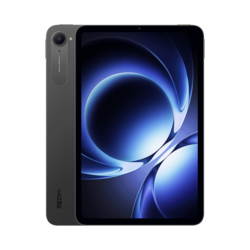
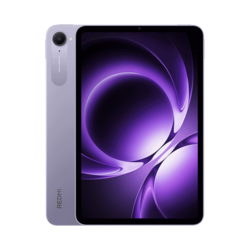




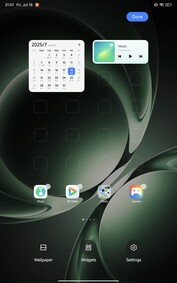
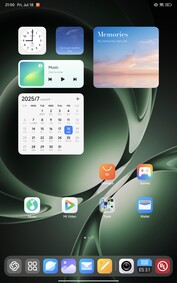
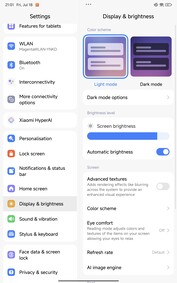
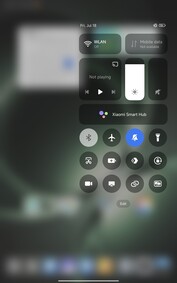

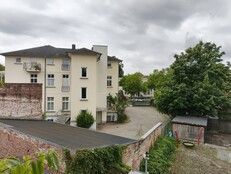



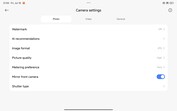



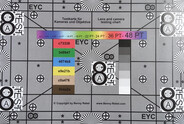




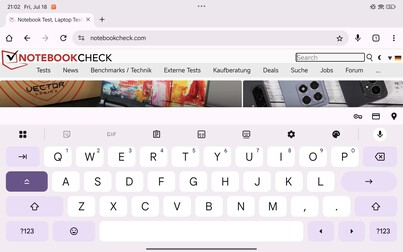

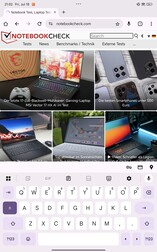

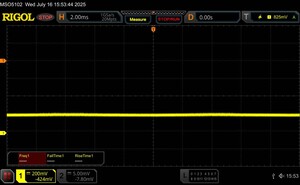
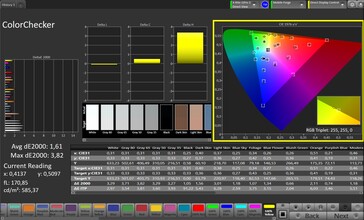
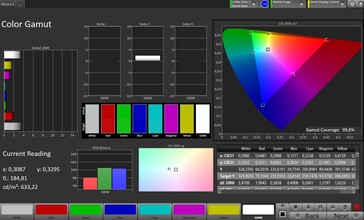

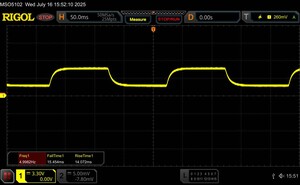
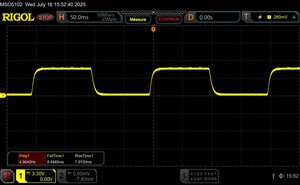
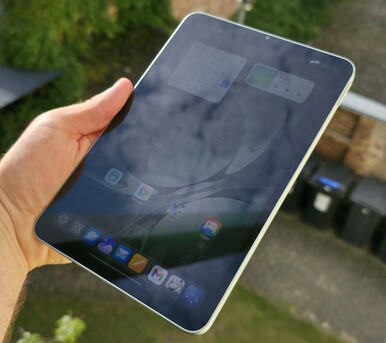
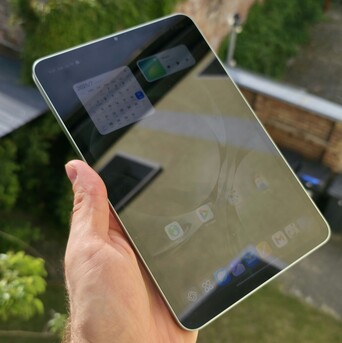





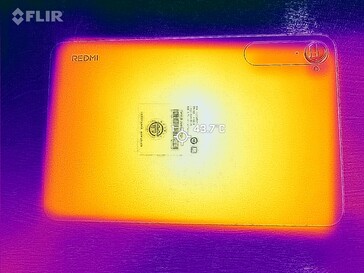
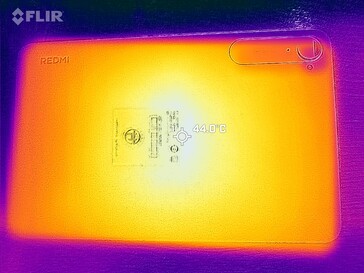
 Total Sustainability Score:
Total Sustainability Score: 




